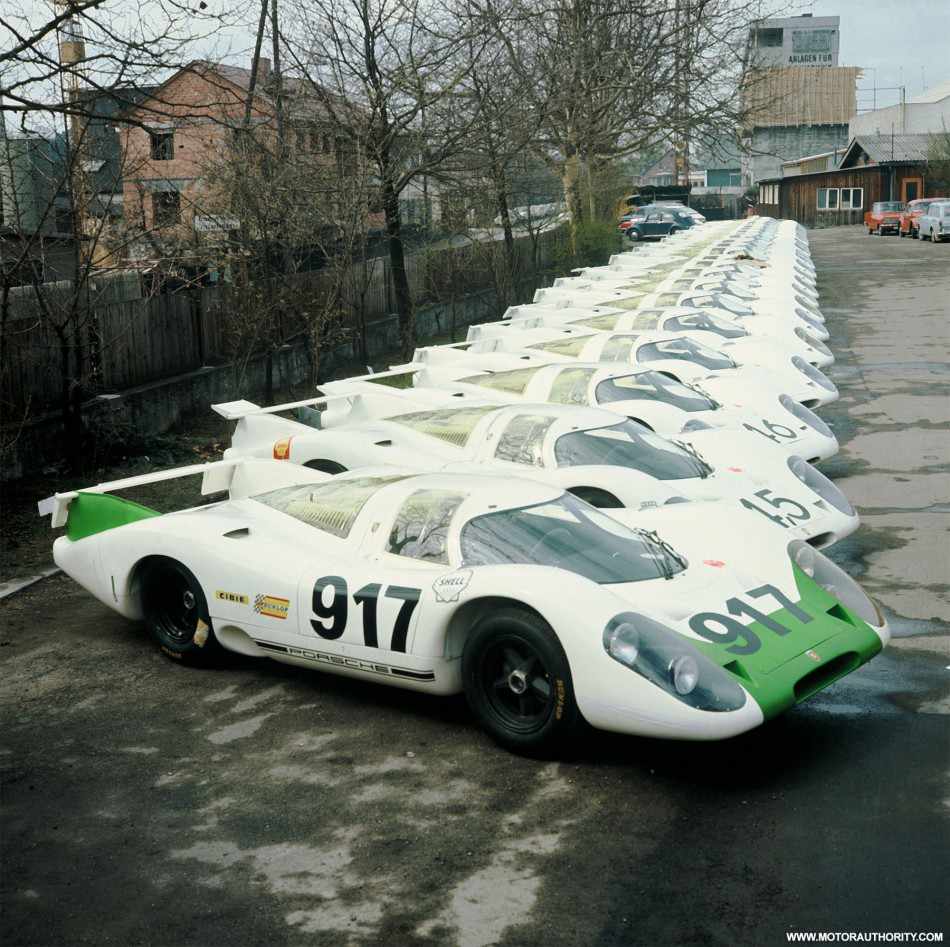
I can only imagine the time when car aficionados strolled along the latest and greatest models at the 1969 Geneva Auto Show and happened upon a brand new concept: the Porsche 917. Equipped with a 4.5 litre with a rocket-like 520 HP, the car was born after the FIA relaxed their racing construction guidelines. For gadgetheads, the conceptual arrangement of the car – 12 horizontal cylinders with a titled crankshaft – was a dream.
And here we are 40 years later and the race car that set the tone for innumerable models and racing improvements is one of the most classic and celebrated icons of the modern auto era. There are not many models that can boast being featured as a brand spankin’ new prototype and within a year win a championship series–but that’s exactly what the 917 accomplished. It was the first car to give Porsche an overall win at the 24 hours of LeMans in both 1970 and 1971, and it could go 100 km/h in 2.5 seconds. For those of you scoring at home, that’s pretty fast.
The development of the Porsche 917 was a risk, an expensive risk. The Commision Sportive Internationale (otherwise known as the FIA) had previously ruled that the Group 4 sports cars (5 litre) could participate if they had produced 50 units. The problem was that these narrowly-targeted cars were either going the way of the dinosaur (Ford GT40) or were not really all that great–and the lack of participants forced the FIA to drop the 50 unit threshold to 25. Porsche decided to exploit this change with vigor. By continually making tweaks and selling off the used ones to customers, the company decided to build a whole new car with 25 units of the 4.5 litre 917 with the intent on winning the 24 hours race. Which they ran away with.
After its aggressive beginning, the 917 was a symbol of racing and excellence. Forty years later, in a world of consumer eco-hippie-mobiles, the 917 brings back fond memories of when racing was racing and going as fast as you could was all that mattered.
Now that I’ve waxed on, it’s time to wax off….Wait a minute. That didn’t sound right. ![]()
